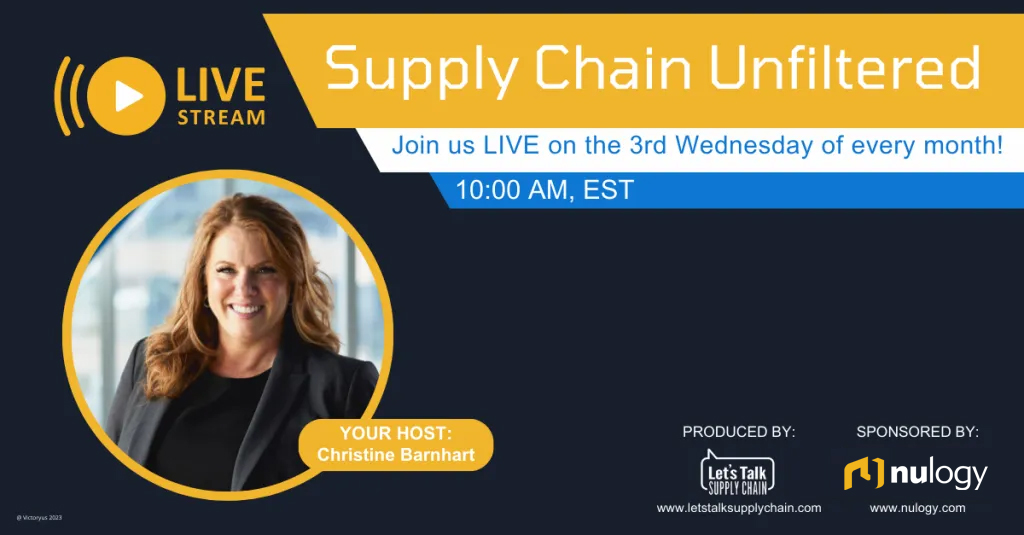Do you have an ear for music?
In a recent forum hosted by The Visibility Council, I made the following comment that elicited some responses amongst supply chain executives in attendance:
In a dance, you might be dancing solo, but there’s a beat, a little rhythm. And dancing with a partner or in a group is a little harder, let’s just say. Much harder when you do it in a troupe. The thing that’s hard about supply chain is that no one succeeds alone.
(I wanted to elaborate on this idea a bit more–read on below.)
I’m sure a healthy number of you out there are musically inclined, whether you sing, dance, play an instrument…or even DJ!
Regardless of your experience with music, we can all empathize with that dreaded feeling of singing off-key, or dancing with two left feet. Performing is hard, and performing proficiently is a skill that takes years, if not decades, of practice and experience.
Performing with other people, or in an ensemble, is even harder! Not only does each member have to be skilled enough to keep up with each other performer, but they also all have to be synchronized. On beat. In lockstep. The slightest deviation can cause a performance to go awry. No one wants to be the one to step on someone else’s toes–literally or figuratively!
I’m sure this is obvious to everyone. Then, why bring this up? Consider how this issue of synchronization relates to consumer brand supply chains. Hundreds, if not thousands of businesses, suppliers, and brands all around the world are trying to navigate this current climate together–and we all know that this climate is uncertain, to say the least.
In the world of supply chain, a myriad of professionals are working together around the clock to continue delivering the household products we all need every day: supply chain planning, procurement, and IT, among others. The challenge, of course, is synchronization: when multiple parties across the globe are collaborating to plan, execute, and deliver multitudes of product shipments every day, is everyone on the same page? Can their systems keep up with the real-time disruptions, demand shifts, and shortages that have become part and parcel of today’s market?
In other words: are all the above parties reading off the same song sheet? Do they know who is leading the dance? Are they equipped with the tools needed to harmonize together? If not, what are the repercussions of being offbeat and offkey?
I imagine for supply chains, the consequences are much more far-reaching than an audience’s lukewarm applause.
So, what do we need to do to avoid stepping on each other’s toes? (Figuratively, of course)
I mentioned this earlier, but everyone needs to read off the same song sheet. Doing so will require a step up in technology: the supply chain methodologies that got us to this point just won’t cut it in the future.
Just as an orchestra needs a central piece to perform in unison, disparate enterprises within a consumer brand’s supply chain need to work within a single ecosystem–using a platform that can onboard and enable that synchronized ecosystem.
Moreover, an orchestra needs a maestro or a conductor. A maestro initiates the performance, guides the otherwise disparate instruments to make music together, and sets and changes tempo.
In addition, the maestro knows how to inspire an orchestra to make their vision of the piece come alive. That maestro is the modern day supply chain leader, because they realize that change doesn’t happen on its own and that technology doesn’t just enable itself. The supply chain leader of today is the masterful collaborator, orchestrating one’s supply network to sense and respond by using Multi-Enterprise Supply Chain Business Networks as their instrument.
By leveraging technology, each party can see and work off the same source of data–communicating in real time in response to data that is being created in real time–enabling faster response times, more accurate responses, and higher overall performance.
To put this as an industry-specific analogy near and dear to my heart: during COVID, the DJ was playing a snoozer track for the dance floor. Now, the DJ is playing Billie Jean. Uptown Funk. Livin’ on a Prayer. The dance floor is filling, and you don’t want to be caught flat-footed. To quote a floor-filler: “Get your back up off the wall!”
We all danced to a specific tune before COVID. We now know that the tune playing now is completely different. And, just like a good DJ that keeps us on our toes, we won’t know when the next transition will come, or what beat will be playing next.
But if we are all in lockstep, reading off the same sheet, we can adapt together, and pull in the same direction. Because in supply chain, just as in life, no one succeeds alone.
Download our white paper to learn more about how a multi-enterprise platform can prepare your business for the future.



